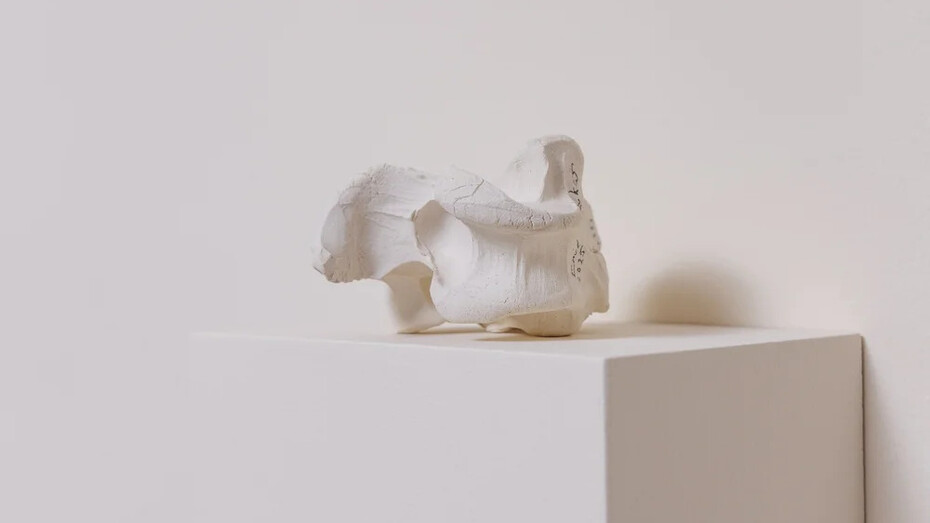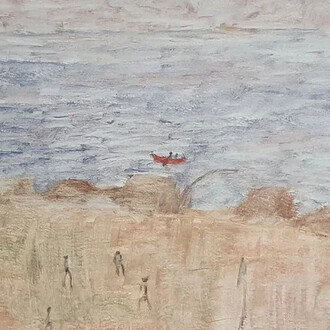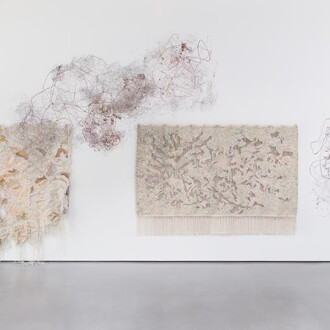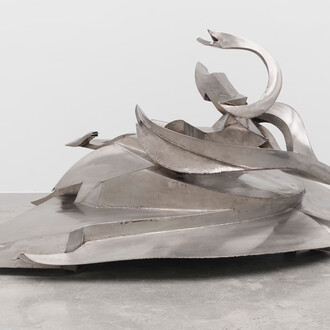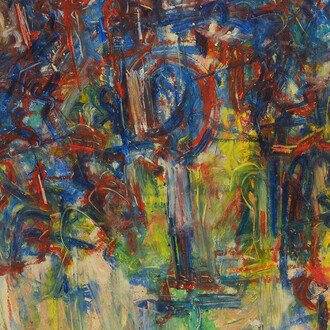Ultimately, if there is enough curiosity the work can have a split second with the viewer to be at its very worst state, the state of being only material, but only for a split second!
(Emil Lukas)
Piero Atchugarry Gallery is pleased to present a new body of work by American artist Emil Lukas (b. 1964, Pittsburgh, USA), in his upcoming solo exhibition In orbit with untraceable balance, curated by René Morales. Lukas is best known for “paintings” that consist of rectangular or circular wall-bound objects crisscrossed with miles of Gütermann thread, each strand wrapped around nails driven into the paintings’ supports along the edges.
Lukas refers to the surface at the back of each of these objects as a “reflector,” a pseudo-mirror that causes ambient light rays to bounce back aggressively through the mesh of thread into space, where it meets the viewer’s eyes. With time and focus, where the density of the mesh thins out around the center of each composition, a sphere-like form emerges, hovering in front or behind the object like an intangible, ethereal presence. Whereas most painters are concerned with light and lighting insofar as they can be used to enhance the painting’s surface, or at least prevent distraction from what is rendered on this surface, for Lukas light itself plays the starring role.
The uncanny effects of Lukas’s thread works arise most fulsomely when the viewer is positioned at just the right spot. The process of finding this spot is iterative; it is found by trial and error, by moving toward or away from the object until the work is fully activated. The effect seeps in slowly, continuously changing as one approaches, steps back, or steps aside. Every element—the work’s scale in relation to the architecture that surrounds it, its distance from the viewer’s body, and the concertedness of the viewer’s attention—functions in relation to the others, playing out over time, coming together as an accumulation of forces that lead to an event. Lukas has described this protracted event as a perturbation, a disturbance, an anomaly. Whereas more typical perceptual processes take place seamlessly, congealing instantaneously and without deliberation, somewhere just beneath the level of consciousness, in Lukas’s work they are flushed out and exposed. In this way, his work gives free rein to the probing, penetrating, searching aspect of visual experience.
With a new series of small sculptural objects made from ceramic clay, Lukas extends into the haptic dimension, the realm of touch. He created these works by squeezing clay between his hands with the maximum amount of force his body could muster. Displaying the imprint of the lines and marks on the skin of the artist’s hands, the results manifest negative space while testing the viewer’s ability to deduce a sense of the intense compression that went into their making.
